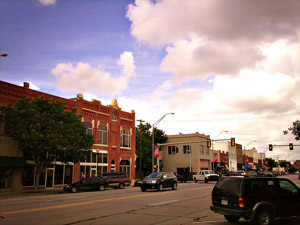
Many locals were surprised that Broken Arrow, Tulsa's largest suburb, hosts a band of extreme poverty.
Jordan R. MacDonald / Flickr


Many locals were surprised that Broken Arrow, Tulsa's largest suburb, hosts a band of extreme poverty.
Jordan R. MacDonald / Flickr

Jordan R. MacDonald / Flickr
Many locals were surprised that Broken Arrow, Tulsa's largest suburb, hosts a band of extreme poverty.
Increasingly, Tulsa’s poor are living in “poverty belts,” areas where more than 40 percent of the population is below the federal poverty level, according to the Tulsa World.
The paper’s Wayne Greene reports:
That concentration of need means some 10,000 local residents not only suffer from their own lack of income, but also find that the educational, health and crime cards are stacked against them ever getting to a better station, according to a report released this week by the Brookings Institution.
There are nine poverty belts in Tulsa County, according to the report.
One tract bounded by Pine and Apache streets and Cincinnati and Greenwood avenues is 87 percent black, according to Census records. Another surrounding the Kendall Whittier neighborhood is 52 percent white and 26 percent Hispanic. A third, in Broken Arrow, is 67 percent white and 8 percent Hispanic.
Nationally, the study found that the number of people living in poverty belts rose by one-third over the last decade.
The poverty belt in Broken Arrow surprised many, the World reported.
“I think a lot of people look at Broken Arrow as a community that is thriving, and in a lot of ways we are; but I happen to know firsthand that there are quite a few families struggling on a continuous basis,” said Kim Goddard, executive director of Broken Arrow Neighbors, a United Way agency that offers relief programs.